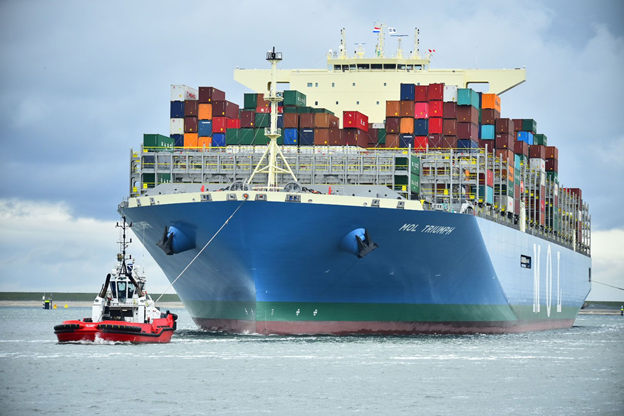Cargo and freight are two words that are easily used interchangeably. While they both generally mean the same thing, they have a few differences. The difference between these two terms lies mainly in the vehicle used for transporting the goods or items. While cargo refers to goods transported via ship or plane, freight usually refers to goods transported via trains or trucks.
You will note that you have a cargo ship and cargo plane. On the other hand, you have a freight train and a freight truck. However, you do not need to be bothered about these differences because they are not too important. You can however learn more about these differences here.
What should be of utmost importance to you is the smooth and efficient processing of your cargo or freight for shipping. The truth is that the processes involved can be confusing, leading to frustration and unsatisfactory results. Especially for the inexperienced customer.
To help improve this situation we shall be looking at a few tips that can help you with various aspects of your cargo or freight shipping. Even if you are new to this, some of these tips will help you as you get started.
Prepare Your Package
This may look like an obvious statement but it is still very important. Depending on the kind of cargo you are preparing and how it will be shipped. Packaging is also very important.
It is important to understand that all through the shipping process. At different cross-docking and transloading points your package(s) will be handled by different people and in different ways. It is therefore critical that you package everything with extra protection to ensure that your goods are not damaged in transit.
Even when you take on a whole container for your cargo, you will still need to properly prepare its content for the extreme conditions at sea, and en-route its final destination. You should of course ensure you have good quality containers. You can get these from sites like shipped.com.
Another reason why you should pack your cargo carefully is to maximize space. The shipping process is practically obsessed with weights, dimensions, and space. These largely determine how much you spend. Waste space and you pay more.
Take Insurance Seriously
You cannot afford to take the insurance coverage of your cargo lightly. This is one of the most important aspects of this process. You need to properly insure everything you are shipping because disasters do occur and sadly, you do not know when any will occur. Properly insuring your shipment therefore ensures that should any damages occur during the shipping process, you will have something to fall back on.
Understand the Process
If you are shipping internationally, you need to understand the process. The process of international shipping involves 5 physical steps and 2 documentation steps.
These seven overall steps cover the stages the shipment will go through from you the shipper to the receiver also known as the consignee. They include:
Export Haulage
This is the stage where the shipment moves from you the shipper to the freight forwarder who will be taking care of the actual shipping.
Origin Handling
At this point, the freight forwarder moves your cargo to the port from which it will be shipped.
Export Customs Clearance
This is the first documentation stage, where the local customs officials will inspect the necessary papers before granting the necessary permissions for shipping.
Ocean Freight
The cargo at this stage is now at sea, en-route its destination.
Import Customs Clearance
The cargo has reached its port of destination and the customs there will at this stage inspect the documents before clearing it for entry. This is the second documentation stage.
Destination Handling
Once Customs has cleared the cargo, the freight forwarder will then move it to the warehouse from where it will be moved to the consignee.
Import Haulage
This is the last stage and it involves moving the cargo or container to the final destination which was stipulated at the very beginning.
Depending on the type of contract signed above, the issue of insuring the goods can be declared the responsibility of the shipper or the consignee. This is a critical point to note.
Export Haulage Cost Saving
Remember that this is the first step in the shipping process as described above. You will usually have contracted a driver to come and pick up your container with the freight truck for transportation to the freight forwarder. This may even be an arrangement with the forwarder.
In a lot of these cases, these trucks work based on time. Read through your contract agreement carefully to be sure. You may find that the first two hours the driver spends with you are free or included in your initial payment. You only begin to incur additional charges when those two hours elapse.
To ensure you do not incur these additional charges, get enough hands on the ground to ensure the container is completely loaded within those two hours. This will save you those extra charges.
For tips on other ways of making savings during the shipping process, read this article.
Declaring Organic Cargo
By organic cargo, we are simply referring to natural food items – vegetables, fruits, etc. Since they are edibles, they are treated differently. No country wants to admit any dangerous item into its shores. Properly declare these items so that Customs officials will immediately know what they are and treat them accordingly. If you do not properly declare them and they are found, you may find your cargo detained, increasing the risk of these items going bad while you incur daily charges at the port.
Conclusion
The tips given above are just that –tips. There is a lot more to this process and you may require expert directions all through. This may be a lot for a newbie to take in, but if you can find the right shipping company to work with, the process will be made a lot easier and things a lot clearer.
What you therefore need to do is to find a suitable shipping company to start this journey with.
Also, read this: Better Livestock Management in Australia




